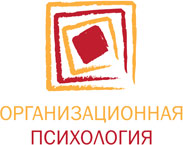
 |
Organizational Psychology |
Editorial officeAddress: 20, Myasnitskaya, 101000 Moscow, Russia
|
Evgeny Osin1, Tatiana Ivanova1,2, Tamara Gordeeva3,4Autonomous and controlled professional motivation predict subjective well-being in Russian employees
2013.
Vol. 3.
No. 1.
P. 8–29
[issue contents]
The paper is focused on measurement and psychological effects of work motivation in Russian organizational context. The authors describe the model of motivational continuum (Deci, Ryan, 2000) and the existing instruments operationalizing it. The results of research into sources and consequences of intrinsic and extrinsic motivation are summarized. Based on self-determination theory, a pilot version of Russian-language Professional Motivation Questionnaire (PMQ) was developed, with four scales, intrinsic motivation, identified regulation, external regulation, and amotivation. The questionnaire was validated in an empirical study using a large sample (N=4708) of Russian production plant employees. The methods also included a number of well-being indicators relevant to the work context (work engagement, job satisfaction, work-life balance, organizational commitment, emotions at work, and satisfaction with life). The data showing structural, convergent, and discriminant validity, as well as reliability of the PMQ subscales are presented. The strongest demographic predictors of professional motivation were employee position, education, age, and work experience. When demographic variables were controlled for in hierarchical multiple regression, professional motivation variables were strong predictors of affect balance, satisfaction with life, job satisfaction, work engagement, and organizational commitment. Using hierarchical cluster analysis, four distinct patterns of work motivation (autonomous, controlled, amotivated, and undefined) were identified. The senior and middle management mostly exhibited the autonomous pattern, whereas controlled and amotivated patterns were mostly found among blue-collar employees. The results are discussed with reference to self-determination theory and the concept of work alienation.
Citation:
Osin Evgeny N., Ivanova Tatiana Y., Gordeeva Tamara Olegovna (2013) Avtonomnaya i kontroliruemaya professional'naya motivatsiya kak prediktory sub"ektivnogo blagopoluchiya u sotrudnikov rossiyskikh organizatsiy [Autonomous and controlled professional motivation predict subjective well-being in Russian employees] Organizational Psychology – Russia (e-journal), 1, pp. 8-29 (in Russian)
| |||||||||||||||